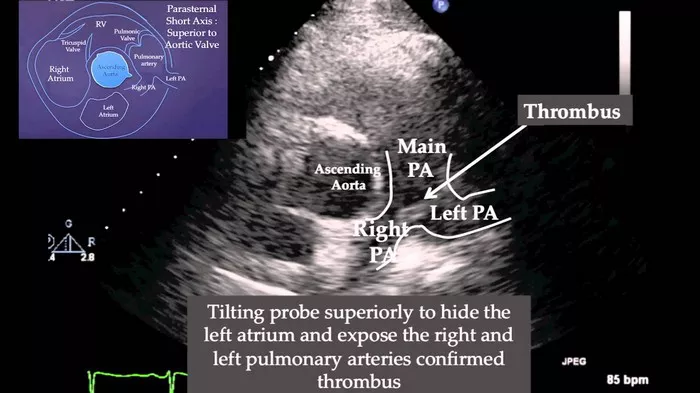Pulmonary artery pressure (PAP) is a crucial parameter in assessing the cardiovascular health of an individual. It reflects the pressure exerted by blood flowing through the pulmonary arteries, which carry oxygen-depleted blood from the heart to the lungs for oxygenation. Echocardiography, a non-invasive imaging technique, plays a pivotal role in measuring PAP and identifying any abnormalities. In this comprehensive guide, we delve into the nuances of normal pulmonary artery pressure on echocardiogram, its significance, measurement methods, and clinical implications.
The pulmonary arteries are responsible for transporting deoxygenated blood from the right ventricle of the heart to the lungs, where it picks up oxygen and releases carbon dioxide. The pressure within these arteries, known as pulmonary artery pressure, is influenced by various factors such as cardiac output, pulmonary vascular resistance, and the compliance of the pulmonary vasculature.
Normal Range of Pulmonary Artery Pressure
The normal range of pulmonary artery pressure on echocardiogram can vary slightly depending on factors such as age, sex, and body size. However, in general, the mean pulmonary artery pressure (mPAP) is typically less than 25 mmHg at rest. Pressures above this range may indicate pulmonary hypertension, while pressures significantly below may suggest hypotension or other cardiovascular abnormalities.
Measurement of Pulmonary Artery Pressure on Echocardiogram
Echocardiography is a valuable tool for assessing pulmonary artery pressure non-invasively. It utilizes ultrasound waves to create images of the heart and its surrounding structures, allowing clinicians to measure various parameters, including PAP. The following are common methods used to assess pulmonary artery pressure on echocardiogram:
1. Tricuspid Regurgitant Jet Velocity (TRV): This method measures the velocity of the tricuspid regurgitant jet, which is the backward flow of blood from the right ventricle into the right atrium due to incomplete closure of the tricuspid valve. The peak velocity of this jet is used to estimate systolic PAP (sPAP) using the simplified Bernoulli equation.
2. Pulmonary Artery Acceleration Time (PAAT): PAAT is the time taken for the velocity of blood flow in the pulmonary artery to reach its peak after systole. A shorter PAAT may indicate increased PAP.
3. Pulmonary Artery Systolic/Diastolic Ratio (PAS/PAD): This ratio compares the systolic and diastolic velocities of blood flow in the pulmonary artery. An elevated ratio may suggest pulmonary hypertension.
4. Right Atrial Pressure (RAP) Estimation: RAP is an essential component in calculating mPAP using echocardiography. It is estimated based on the size and collapsibility of the inferior vena cava (IVC) and the presence of respiratory variations in its diameter.
5. Transesophageal Echocardiography (TEE): In certain cases where a more detailed assessment of PAP is required, TEE may be used to visualize the pulmonary artery and assess pressure gradients more accurately.
Clinical Significance of Normal Pulmonary Artery Pressure
Understanding and maintaining normal pulmonary artery pressure is crucial for cardiovascular health. Here are some key clinical implications:
1. Pulmonary Hypertension (PH): Elevated pulmonary artery pressure, known as pulmonary hypertension, can lead to symptoms such as shortness of breath, fatigue, and chest pain. It is classified into several groups based on underlying causes, and accurate measurement of PAP aids in diagnosis and management.
2. Heart Failure: In cases of left heart failure, increased pressure in the left atrium can result in elevated pulmonary artery pressure, contributing to pulmonary congestion and worsening symptoms.
3. Chronic Lung Diseases: Conditions such as chronic obstructive pulmonary disease (COPD) and interstitial lung disease (ILD) can cause pulmonary hypertension due to changes in lung structure and function.
4. Monitoring Disease Progression: Regular assessment of pulmonary artery pressure helps monitor disease progression, response to treatment, and overall prognosis in patients with cardiovascular and pulmonary conditions.
Conclusion
Normal pulmonary artery pressure on echocardiogram provides valuable insights into cardiovascular health and function. Accurate measurement and interpretation of PAP parameters are essential for diagnosing and managing conditions such as pulmonary hypertension and heart failure. By understanding the significance of normal PAP values and utilizing advanced imaging techniques like echocardiography, healthcare providers can optimize patient care and improve outcomes in cardiovascular medicine.


